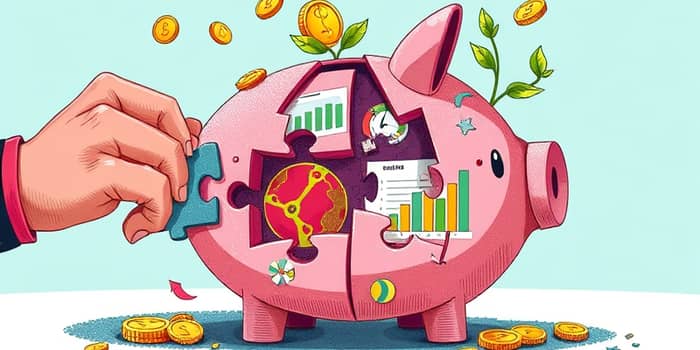
Every journey to financial health begins with understanding the forces that shape our behavior. By examining the persistent spending patterns that hold us back and the decisions we repeat unconsciously, we gain clarity. This article shows how to deconstruct habits and reassemble a robust, resilient financial mindset. Through real data from 2025 and psychological insights, you’ll discover practical strategies for sustainable success and learn to replace damaging routines with empowering rituals.
Money habits form through repetition and reward, embedding themselves in our daily lives. When you swipe a credit card, the instant gratification floods your brain with dopamine. Over time, you build neural pathways that make the behavior almost automatic. In addition, social cues—from friends’ lifestyles to targeted marketing—reinforce spending impulses. Research shows nearly half of Americans struggle because they are focused on today rather than tomorrow, deprioritizing long-term goals for fleeting pleasures. Recognizing these influences is the first step to reclaiming control and making deliberate, conscious choices.
These patterns are not unique to any one demographic. With average credit card debt around $8,000 per household and interest rates exceeding 20%, Americans face mounting pressure. Declining purchasing power due to inflation means many feel forced into trade-down consumer behavior, sacrificing quality for affordability. Recognizing which habits drain your wallet allows you to pinpoint the areas needing immediate attention.
Before you can rebuild healthier habits, you must identify why you spend. Are you seeking status? Comfort? Distraction? Tools like the LifeValues Quiz help clarify your core financial motivators and values. Take time to journal about your spending triggers: emotional lows, social gatherings, ads on social media. By understanding the emotional and social triggers that drive your choices, you can design interventions to interrupt these impulses and redirect resources toward goals that truly matter.
Consumer behavior in 2025 varies widely across age groups. Gen Z, wielding an estimated $450 billion in global purchasing power today and projected to reach $12 trillion by 2030, is both trend-driven and saving-focused. About 42% are saving more than six months ago, yet 29% haven’t contributed to retirement funds. Millennials show a greater willingness to splurge on discretionary items, with over 50% planning increased travel and entertainment spending. Baby Boomers remain cautious: only 20% intend to splurge, down from previous years. Understanding these patterns helps you benchmark your habits against generational norms.
By focusing on one habit at a time, you create incremental and sustainable habit change. Each small victory reinforces your confidence and makes the next adjustment easier. Over time, these steps compound into profound transformation.
Leverage technology and research-based quizzes to empower your process. Below is a table of selected resources to guide your journey:
Using these tools can uncover blind spots and reinforce new patterns. Regular check-ins with your budget and values ensure you stay aligned with long-term objectives.
Breaking old money habits is not a one-time event but an ongoing practice. By dissecting your routines, examining motivations, and implementing structured steps, you transform scattered efforts into a cohesive plan. This journey connects everyday choices to future stability and satisfaction. Remember, every dollar you save or redirect is a building block for long-term financial security and freedom. Start today by choosing one small change, and witness how deliberate action reshapes your financial destiny.
References













